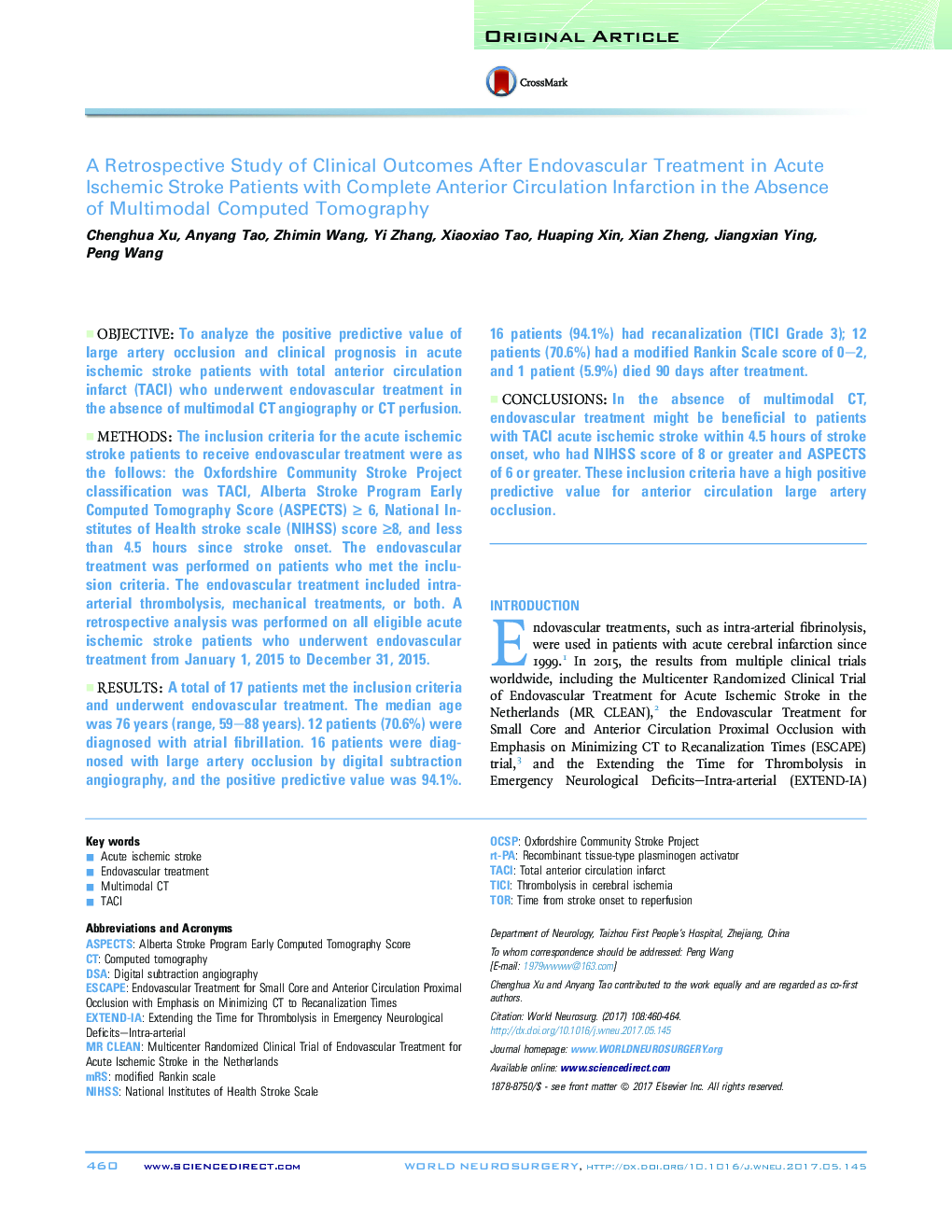| Article ID | Journal | Published Year | Pages | File Type |
|---|---|---|---|---|
| 5633794 | World Neurosurgery | 2017 | 5 Pages |
ObjectiveTo analyze the positive predictive value of large artery occlusion and clinical prognosis in acute ischemic stroke patients with total anterior circulation infarct (TACI) who underwent endovascular treatment in the absence of multimodal CT angiography or CT perfusion.MethodsThe inclusion criteria for the acute ischemic stroke patients to receive endovascular treatment were as the follows: the Oxfordshire Community Stroke Project classification was TACI, Alberta Stroke Program Early Computed Tomography Score (ASPECTS) ⥠6, National Institutes of Health stroke scale (NIHSS) score â¥8, and less than 4.5 hours since stroke onset. The endovascular treatment was performed on patients who met the inclusion criteria. The endovascular treatment included intra-arterial thrombolysis, mechanical treatments, or both. A retrospective analysis was performed on all eligible acute ischemic stroke patients who underwent endovascular treatment from January 1, 2015 to December 31, 2015.ResultsA total of 17 patients met the inclusion criteria and underwent endovascular treatment. The median age was 76 years (range, 59-88 years). 12 patients (70.6%) were diagnosed with atrial fibrillation. 16 patients were diagnosed with large artery occlusion by digital subtraction angiography, and the positive predictive value was 94.1%. 16 patients (94.1%) had recanalization (TICI Grade 3); 12 patients (70.6%) had a modified Rankin Scale score of 0-2, and 1 patient (5.9%) died 90 days after treatment.ConclusionsIn the absence of multimodal CT, endovascular treatment might be beneficial to patients with TACI acute ischemic stroke within 4.5 hours of stroke onset, who had NIHSS score of 8 or greater and ASPECTS of 6 or greater. These inclusion criteria have a high positive predictive value for anterior circulation large artery occlusion.
